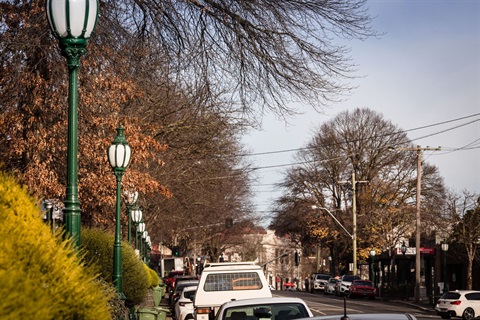Reduced travel on Victoria’s roads during the COVID-19 pandemic did not equate to proportionate reductions in road trauma.
New research from the Monash University Accident Research Centre (MUARC) examined the impact of the Victorian pandemic restrictions of 2020 and 2021 on road trauma outcomes when the state was subject to major restrictions on travel and social interaction.
In metropolitan Melbourne, total travel decreased between 30 to 60 per cent at different times during the pandemic restrictions. However, increased risk-taking behaviour such as excessive speeding, and drink- and drug-driving likely contributed to higher levels of road trauma than otherwise expected.
Despite a decrease in random breath testing, the positive detection rate for illegal blood alcohol concentration increased to five-times the pre-pandemic rate at the peak of the first lockdown and remained high throughout 2020. Similarly, the rate of illicit drug detection by random drug tests more than doubled compared to pre-pandemic levels.
While the total number of speeding infringements decreased, the rate of infringing per vehicle increased, particularly in metropolitan Melbourne. Data shows the rate of speeding at intersections was up by 50 per cent from 2019, and the rate of speeding caught by fixed cameras on highways increased by around 15 per cent during the restriction periods.
Analysis specific to heavy vehicles showed the most dramatic changes of all vehicle types with the rate of infringing per vehicle increased by over 100 per cent, both on highways and at intersections at certain times.
To understand the impact that the pandemic restrictions had on road trauma, MUARC researchers investigated the changes in risk-taking behaviour in tandem with changes in travel.
The research combined a wide range of data from Victoria’s road safety partners including road network traffic data and road infrastructure investment data from the Victorian Department of Transport and Planning, fixed- and mobile- speed camera data from the Department of Justice and Community Safety, roadside alcohol and drug testing data from Victoria Police, and Victorian hospital admission and emergency presentation data from the Department of Health.
Utilising this routinely-collected data, researchers developed quantitative ‘intermediate outcome measures’, that provided an indicator of risk-taking behaviour that is causally linked to road trauma.
Using data from the fixed-camera network, casualty crash risk was estimated to be up to 38 per cent higher on highways during the restriction periods compared to 2019.
Additionally, data from the mobile speed camera program, used to estimate increases in casualty crash risk in metropolitan Melbourne, showed increased risk of:
- 44 per cent in speed zones of ≤50 km/h
- 85 per cent in speed zones of 60-70 km/h,
- 68 per cent in speed zones of 80-90 km/h and
- 64 per cent in speed zones of 100-110 km/h.
Lead author Dr Angelo D’Elia says the regular calculation and monitoring of intermediate outcome measures using Victoria’s road safety program data could enable a better understanding of risk on the road network and provide leading indicators of road trauma.
“The monitoring of such measures would provide the ability to more proactively respond to emerging road safety issues, ” Dr D’Elia said.
The full report can be accessed here.








